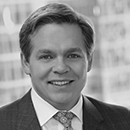Last month, my team and I resigned from Morgan Stanley in Woodland Hills and accepted positions at the Private Banking & Investment Group (PBIG) at Merrill Lynch in Century City. After years of competing with PBIG, my team and I took a leap of faith and joined the group. One of the key benefits of the Merrill Lynch platform is access to market insights from industry thought leaders such as Christopher Wolfe, PBIG Chief Investment Officer, and Michael Hartnett, BofA Merrill Lynch Global Research’s Chief Investment Strategist. The firm also believes firmly in goals based wealth management – developing a deep understanding of the client’s goals – and bringing that understanding to the client relationship.
My initial conversations with Chris have focused on the big themes that have driven investment results since the 2008 financial crisis. First, Chris emphasizes the distinction that we have been in a refinancing market, not a reflation market. This means the benefit of low interest rates has accrued to those corporations with debt that were able to refinance it at lower rates. Second, he supports the view that interest rates should remain ‘lower for longer.’ Third, he acknowledges that momentum has been a dominant factor over the past several years but there remain ideas on how to harvest it. And finally, we note the over-ownership of U.S. everything including stocks, bonds and real estate given the relative weakness in Europe, Japan, China and indeed, most other markets.
[To read more of Bruce Munster’s thought leadership click here]
In addition, BofA Merrill Lynch Global Research’s Chief Investment Strategist Michael Hartnett highlights that 83% of the global equity markets representing $90 trillion of GDP are supported by 0% interest rates. Collectively, this represents approximately 1.4 billion people who need yield and income as global central banks have adopted a zero interest rate policy (ZIRP) or in some instances (Denmark and Switzerland) even a negative interest rate policy (NIRP)1.
After digesting the magnitude of these insights, it becomes clear that the impacts of ZIRP and NIRP mean that investors around the globe need to generate better returns than may be available in traditional securities. Here at home, and in the pages of CSQ, we have stressed the need for private investors to ‘lock-in’ predictable, recurring tax advantaged income. Perhaps the more interesting byproduct of this low rate world is that it has forced capital out of low-yielding investments and into risk assets – specifically U.S. common stocks because of the unyielding perception that There Is No Alternative (TINA)2.
We believe the TINA perception has pushed the S&P 500 into the 99% percentile of historic valuations1. Further, U.S. equities are trading near an all-time high valuation disparity relative to stocks in Europe and Japan underscoring Chris’s ‘over-ownership’ concern. So what happens next?
Absent another financial crisis or recession in the U.S., stocks could go higher than even the bulls expect. European and Japanese pension funds may no longer be able to meet their return targets by investing in their home country bonds. Investing in 10yr German Bunds at .35% and JGB’s at .40% (as of 3/5/15) would not earn an acceptable rate of return, let alone, beat inflation.
In this forecasted environment, Chris believes Sovereign Wealth Funds and the aforementioned large pension funds around the world could decide to reallocate more assets into U.S. equities and with the surging dollar, perhaps into U.S. corporate bonds as well. For the large pension fund managers who may contemplate a significant reallocation, it is convenient that the ECB is engaged in their first quantitative easing (QE) bond buying program while the Bank of Japan has steadily increased their bond purchases.
[For more on Merrill Lynch’s approach to Private Banking click here]
The U.S. dollar has already appreciated materially due principally to the divergent interest rate policy of the Federal Reserve, which has vowed to hike rates. Other Central Banks have deemed it necessary to cut interest rates so far this year. This significant divergence could exacerbate the rally in the U.S. dollar with the dollar index (DXY) already up 22% in the trailing 52 weeks (Bloomberg, March 2015). The potential flood of new money into U.S. markets has the potential to send risk assets much higher but could also push the U.S. dollar much higher as well. The challenge for U.S. based multinationals is obvious. Less obvious is the impact on the roughly 9 trillion of dollar denominated debt outside of the United States. Imagine the challenge to debt service in U.S. dollars while earning revenue in significantly deteriorated currencies.
After one month at PBIG, the best portfolio advice I have received from my new colleagues is to consider the implications of the mounting risks to both the upside and downside scenarios which highlight the need for explicit hedges.
1 Bank of America Merrill Lynch, “A Transforming World – Year Ahead 2015”, 25 November 2014.
2 There Is No Alternative” references the fact that interest rates are so low, so savers feel they have no alternative but to invest.
Any opinions expressed herein are given in good faith, are subject to change without notice, and are only correct as of the stated date of their issue. Past performance is not a guarantee of future results. Merrill Lynch Wealth Management makes available products and services offered by Merrill Lynch, Pierce, Fenner & Smith Incorporated, a registered broker dealer and Member SIPC, and other subsidiaries of Bank of America Corporation.The Private Banking and investment Group is a division of MLPF&S that offers a broad array of personalized wealth management products and services. Investment products:Are Not FDIC Insured Are Not Bank Guaranteed May Lose Value













































